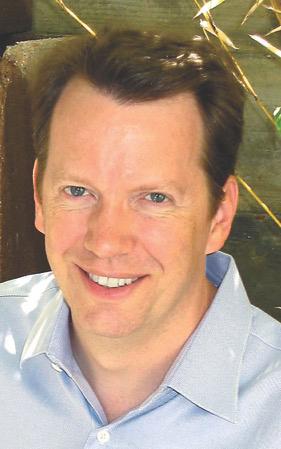
Sean Carroll, a theoretical physicist at California Institute of Technology, has made a career of making cosmology and physics understandable for those of us who just barely passed high school algebra. Carroll discusses his new book, “The Big Picture: On the Origins of Life, Meaning and the Universe Itself,’’ at 7 p.m. Wednesday at Harvard Book Store.
BOOKS: What are you currently reading?
CARROLL: I just finished Helen Wecker’s fantastic “The Golem and the Jinni.’’ It’s the kind of thing I like reading these days, really good literary fiction with some fantastical element to it. When I was a kid in high school, I read science fiction. When I got to grad school and afterward I discovered the rest of the world and read everything from Jane Austen to Julian Barnes and Thomas Pynchon. I have settled in between with people who are really good writers but who are not purely into realism.
BOOKS: Is that a hard combination to find?
CARROLL: I don’t think it is. Pynchon does that. Barnes too. It’s a gamut from people who get identified as science fiction writers like Ursula K. Le Guin and Kurt Vonnegut to mainstream literary novelists like Michael Chabon. My favorite example is Iain Banks who after publishing his first novel, “The Wasp Factory,’’ alternated between writing science fiction and literary novels.
BOOKS: Do you read nonfiction?
CARROLL: That’s part of my job. I don’t read that much physics, but I did just read a fantastic book, “Black Hole Blues and Other Songs from Outer Space,’’ about the building of the LIGO observatory by Janna Levin. For the most part I’ll read about biology or psychology or philosophy.
BOOKS: What have been your favorite recent reads in those categories?
CARROLL: There’s a book by Andrea Nye, “The Princess and the Philosopher,’’ which is probably not the best written, but it is the amazing story of the correspondence between Princess Elisabeth of Bohemia and Rene Descartes. She read some of his stuff and didn’t agree. They started a dialogue back and forth.
BOOKS: Is it a natural path from physics to develop an interest in philosophy?
CARROLL: Sadly you are completely wrong. It’s taken as an insult if a physicist is considered too philosophical. Most physicists think that philosophers just sit in their armchairs and think. Physicists are very down-to-earth, empirical people. They don’t want to think hard about what it all means or where it all comes from.
BOOKS: How did you get turned on to philosophy?
CARROLL: I got turned on to science at 10 years old from reading books in the library. The one that sticks with me is the physicist George Gamow’s “One Two Three . . . Infinity,’’ this wonderful grab bag of a book. He wrote about physics but also about pure math and number theory. Then when I was an undergraduate at Villanova University we had to take three courses of philosophy and three of theology. I fell in love with philosophy.
BOOKS: What books would you recommend for physics dodos?
CARROLL: I think we live in a golden age of books that range from easy-to-read to ones that will challenge you a bit but will be rewarding. “Quantum Computing Since Democritus’’ by Scott Aronson is one I love. It’s high level but written with an engaging style.
BOOKS: Have any of the novels you read touched on physics and the questions you research?
CARROLL: One example is Rebecca Goldstein, who earned a PhD in the philosophy of science and then became a novelist. Her first novel was “The Mind-Body Problem.’’ I recently read “Properties of Light,’’ which is secretly a debate about quantum mechanics.
BOOKS: What kind of book would you never pick up?
CARROLL: I love mysteries, thrillers, graphic novels, but I don’t want to be bored. It’s a fine line because I work hard. My work involves reading and thinking hard. At the end of the day I don’t want to work too hard reading an obscure book. I want a story.
AMY SUTHERLAND
Follow us on Facebook or @GlobeBiblio on Twitter.



